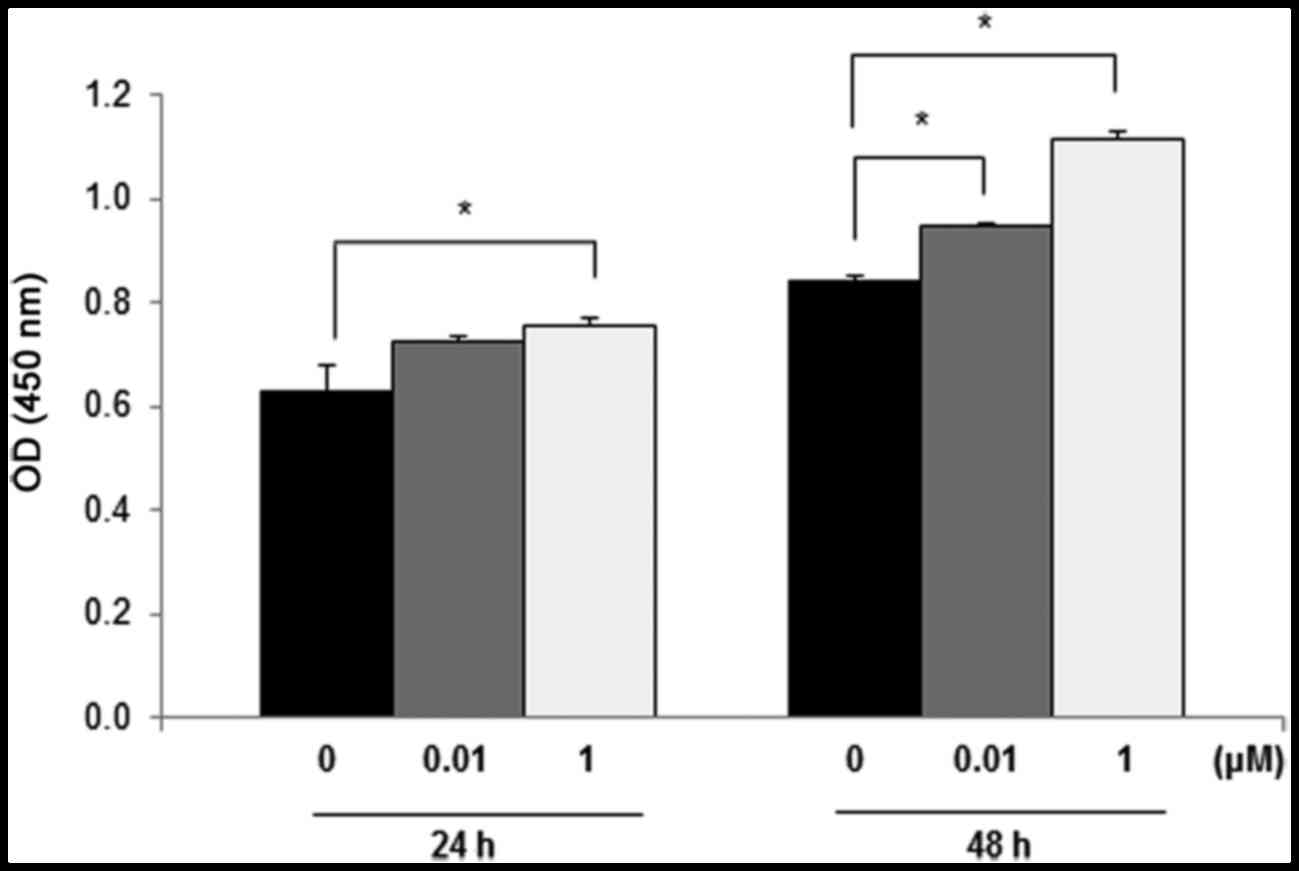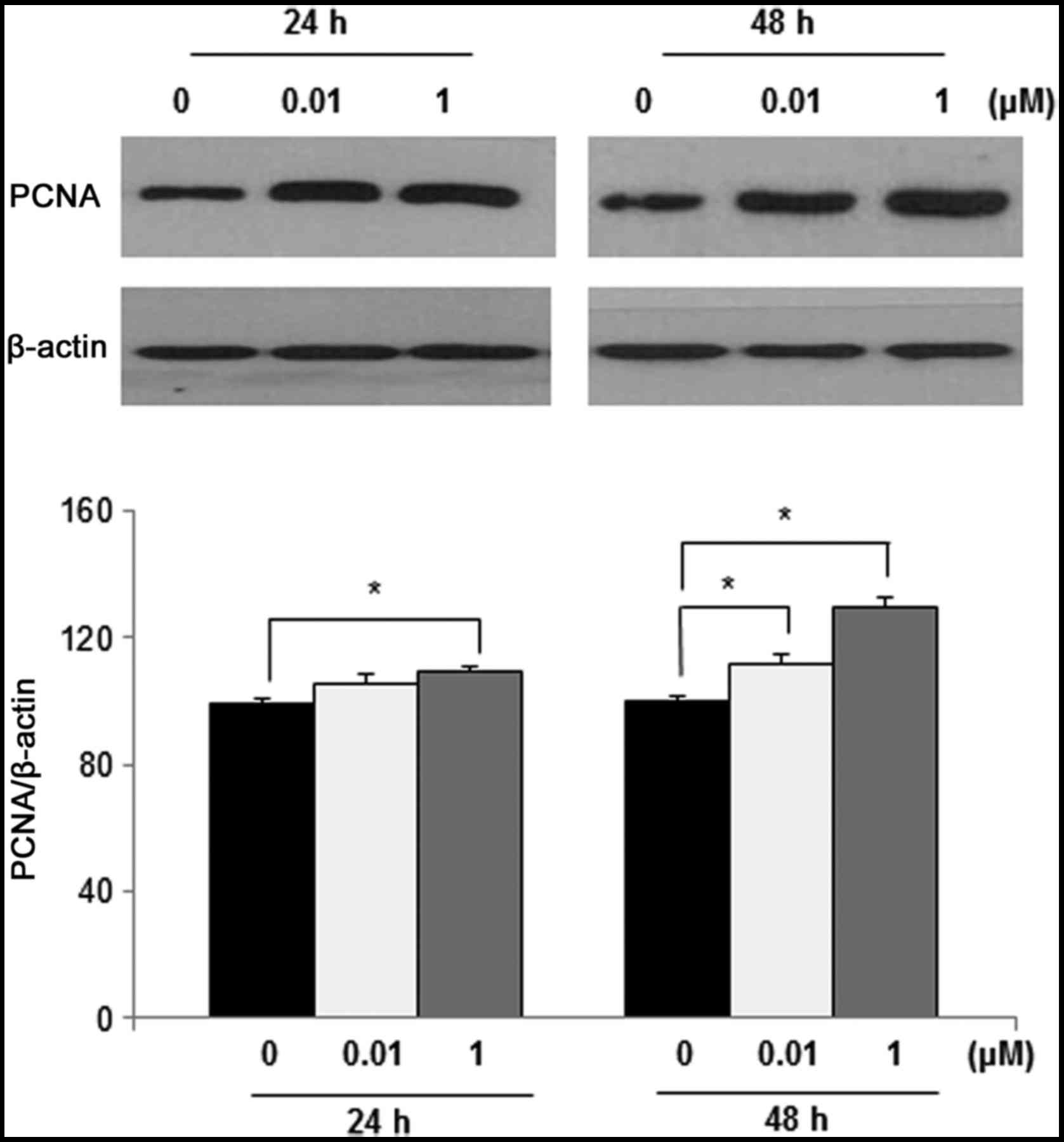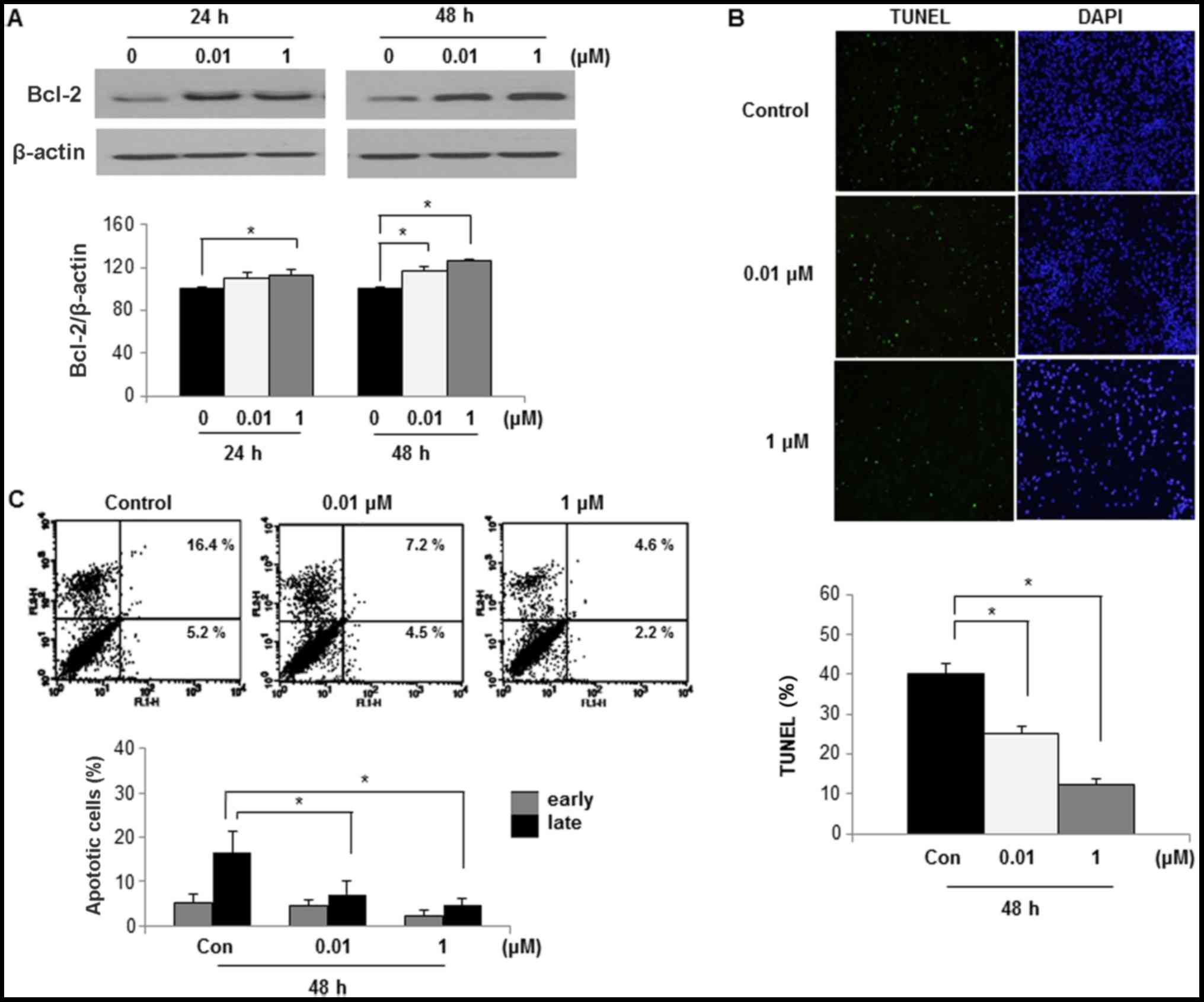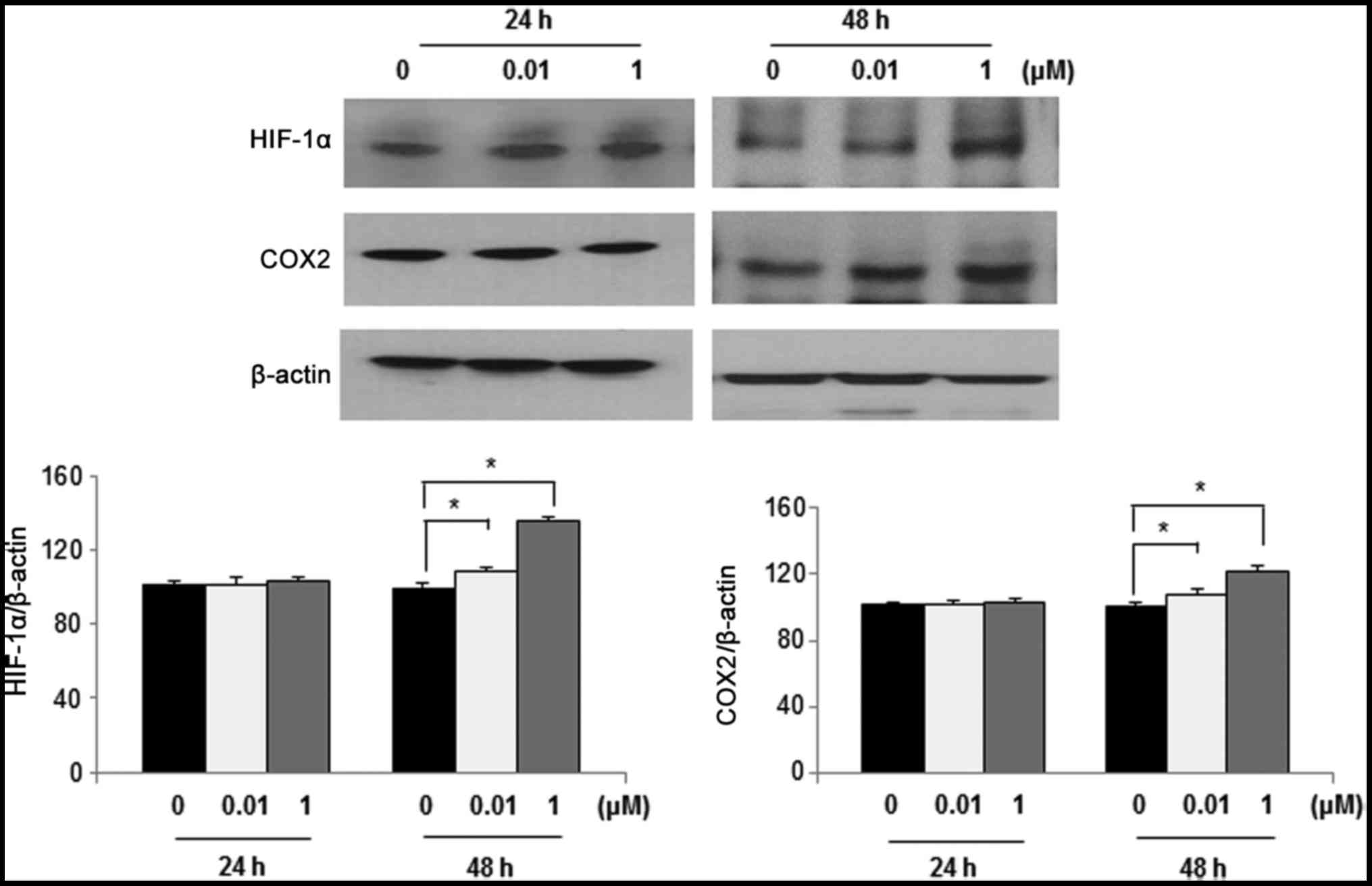|
1
|
Falcone T and Walters MD: Hysterectomy for
benign disease. Obstet Gynecol. 111:753–767. 2008. View Article : Google Scholar : PubMed/NCBI
|
|
2
|
Parker WH: Etiology, symptomatology, and
diagnosis of uterine myomas. Fertil Steril. 87:725–736. 2007.
View Article : Google Scholar : PubMed/NCBI
|
|
3
|
Sell SM, Tullis C, Stracner D, Song CY and
Gewin J: Minimal interval defined on 7q in uterine leiomyoma.
Cancer Genet Cytogenet. 157:67–69. 2005. View Article : Google Scholar : PubMed/NCBI
|
|
4
|
Rose DP, Goldman M, Connolly JM and Strong
LE: High-fiber diet reduces serum estrogen concentrations in
premenopausal women. Am J Clin Nutr. 54:520–525. 1991. View Article : Google Scholar : PubMed/NCBI
|
|
5
|
Prentice R, Thompson D, Clifford C,
Gorbach S, Goldin B and Byar D: Dietary fat reduction and plasma
estradiol concentration in healthy postmenopausal women. The
women's health trial study group. J Natl Cancer Inst. 82:129–134.
1990. View Article : Google Scholar : PubMed/NCBI
|
|
6
|
Greenberg MD and Kazamel TI: Medical and
socioeconomic impact of uterine fibroids. Obstet Gynecol Clin North
Am. 22:625–636. 1995.PubMed/NCBI
|
|
7
|
Wang F, Chen J, Wang L, Ma Y and Mayinuer
N: CYP1A1 genetic polymorphisms and uterine leiomyoma risk: A
meta-analysis. Int J Clin Exp Med. 8:3590–3594. 2015.PubMed/NCBI
|
|
8
|
Markey CM, Rubin BS, Soto AM and
Sonnenschein C: Endocrine disruptors: From Wingspread to
environmental developmental biology. J Steroid Biochem Mol Biol.
83:235–244. 2002. View Article : Google Scholar : PubMed/NCBI
|
|
9
|
Yu L, Moore AB and Dixon D: Receptor
tyrosine Kinases and their hormonal regulation in uterine
leiomyoma. Semin Reprod Med. 28:250–259. 2010. View Article : Google Scholar : PubMed/NCBI
|
|
10
|
Sharpe RM, Fisher JS, Millar MM, Jobling S
and Sumpter JP: Gestational and lactational exposure of rats to
xenoestrogens results in reduced testicular size and sperm
production. Environ Health Perspect. 103:1136–1143. 1995.
View Article : Google Scholar : PubMed/NCBI
|
|
11
|
Lin Y, Wei J, Li Y, Chen J, Zhou Z, Song
L, Wei Z, Lv Z, Chen X, Xia W and Xu S: Developmental exposure to
di(2-ethylhexyl) phthalate impairs endocrine pancreas and leads to
long-term adverse effects on glucose homeostasis in the rat. Am J
Physiol Endocrinol Metab. 301:E527–E538. 2011. View Article : Google Scholar : PubMed/NCBI
|
|
12
|
Tomaszewski KE, Heindel SW, Jenkins WL and
Melnick RL: Induction of peroxisomal acyl CoA oxidase activity and
lipid peroxidation in primary rat hepatocyte cultures. Toxicology.
17:49–60. 1990. View Article : Google Scholar
|
|
13
|
Halden RU: Plastics and health risks. Annu
Rev Public Health. 31:179–194. 2010. View Article : Google Scholar : PubMed/NCBI
|
|
14
|
Ha M, Guan X, Wei L, Li P, Yang M and Liu
C: Di-(2-ethylhexyl) phthalate inhibits testosterone level through
disturbed hypothalamic-pituitary-testis axis and ERK-mediated
5α-Reductase 2. Sci Total Environ. 563–564:566–575. 2016.
View Article : Google Scholar
|
|
15
|
Tseng IL, Yang YF, Yu CW, Li WH and Liao
VH: Phthalates induce neurotoxicity affecting locomotor and
thermotactic behaviors and AFD neurons through oxidative stress in
Caenorhabditis elegans. PLoS One. 8:e826572013. View Article : Google Scholar : PubMed/NCBI
|
|
16
|
Caldwell JC: DEHP: Genotoxicity and
potential carcinogenic mechanisms-a review. Mutat Res. 751:82–157.
2012. View Article : Google Scholar : PubMed/NCBI
|
|
17
|
McKee RH, Butala JH, David RM and Gans G:
NTP center for the evaluation of risks to human reproduction
reports on phthalates: Addressing the data gaps. Reprod Toxicol.
18:1–22. 2004. View Article : Google Scholar : PubMed/NCBI
|
|
18
|
Hoyer PB: Reproductive toxicology: Current
and future directions. Biochem Pharmacol. 62:1557–1564. 2001.
View Article : Google Scholar : PubMed/NCBI
|
|
19
|
Wang GL, Jiang BH, Rue EA and Semenza GL:
Hypoxia-inducible factor1 is a basic-helix-loop-helix-PAS
heterodimer regulated by cellular O2 tension. Proc Natl Acad Sci
USA. 92:5510–5514. 1995. View Article : Google Scholar : PubMed/NCBI
|
|
20
|
Maxwell PH, Wiesener MS, Chang GW,
Clifford SC, Vaux EC, Cockman ME, Wykoff CC, Pugh CW, Maher ER and
Ratcliffe PJ: The tumour suppressor protein VHL targets
hypoxia-inducible factors for oxygen-dependent proteolysis. Nature.
399:271–275. 1999. View
Article : Google Scholar : PubMed/NCBI
|
|
21
|
Harris AL: Hypoxia-a key regulatory factor
in tumour growth. Nat Rev Cancer. 2:38–47. 2002. View Article : Google Scholar : PubMed/NCBI
|
|
22
|
Csiki I, Yanagisawa K, Haruki N, Nadaf S,
Morrow JD, Johnson DH and Carbone DP: Thioredoxin-1 modulates
transcription of cyclooxygenase-2 via hypoxia-inducible
factor-1alpha in non-small cell lung cancer. Cancer Res.
66:143–150. 2006. View Article : Google Scholar : PubMed/NCBI
|
|
23
|
Cao Y and Prescott SM: Many actions of
cyclooxygenase-2 in cellular dynamics and in cancer. J Cell
Physiol. 190:279–286. 2002. View Article : Google Scholar : PubMed/NCBI
|
|
24
|
Williams CS, Mann M and DuBois RN: The
role of cyclooxygenases in inflammation, cancer, and development.
Oncogene. 18:7908–7916. 1999. View Article : Google Scholar : PubMed/NCBI
|
|
25
|
Williams C, Shattuck-Brandt RL and DuBois
RN: The role of COX-2 in intestinal cancer. Ann N Y Acad Sci.
889:72–83. 1999. View Article : Google Scholar : PubMed/NCBI
|
|
26
|
Dempke W, Rie C, Grothey A and Schmoll HJ:
Cyclooxygenase-2: A novel target for cancer chemotherapy? J Cancer
Res Clin Oncol. 127:411–417. 2001. View Article : Google Scholar : PubMed/NCBI
|
|
27
|
Singer CA, Baker KJ, McCaffrey A, AuCoin
DP, Dechert MA and Gerthoffer WT: p38MAPK and NF-kappaB mediate
COX-2 expression in human airway myocytes. Am J Physiol Lung Cell
Mol Physiol. 2855:L1087–L1098. 2003. View Article : Google Scholar
|
|
28
|
Swartz CD, Afshari CA, Yu L, Hall KE and
Dixon D: Estrogen-induced changes in IGF-I, Myb family and MAP
kinase pathway genes in human uterine leiomyoma and normal uterine
smooth muscle cell lines. Mol Hum Reprod. 11:441–450. 2005.
View Article : Google Scholar : PubMed/NCBI
|
|
29
|
Colón I, Caro D, Bourdony CJ and Rosario
O: Identification of phthalate esters in the serum of young Puerto
Rican girls with premature breast development. Environ Health
Perspect. 108:895–900. 2000. View Article : Google Scholar
|
|
30
|
Durmaz E, Ozmert EN, Erkekoglu P, Giray B,
Derman O, Hincal F and Yurdakök K: Plasma phthalate levels in
pubertal gynecomastia. Pediatrics. 125:e122–e129. 2010. View Article : Google Scholar : PubMed/NCBI
|
|
31
|
Wittassek M and Angerer J: Phthalates:
Metabolism and exposure. Int J Androl. 31:131–138. 2008. View Article : Google Scholar : PubMed/NCBI
|
|
32
|
Chen FP and Chien MH: Lower concentrations
of phthalates induce proliferation inhuman breast cancer cells.
Climacteric. 17:377–384. 2014. View Article : Google Scholar : PubMed/NCBI
|
|
33
|
Martinasso G, Maggiora M, Trombetta A,
Canuto RA and Muzio G: Effects of di(2-ethylhexyl)phthalate, a
widely used peroxisome proliferator and plasticizer, oncell growth
in the human keratinocyte cell line NCTC 2544. J Toxic Environ
Health A. 69:353–365. 2006. View Article : Google Scholar
|
|
34
|
Chen X, Qin Q, Zhang W, Zhang Y, Zheng H,
Liu C, Yang Y, Xiong W and Yuan J: Activation of thepi3k-akt-mtor
signaling pathway promotes dehp-induced hep3b cell proliferation.
Food Chem Toxicol. 59:325–333. 2013. View Article : Google Scholar : PubMed/NCBI
|
|
35
|
Zhu H, Zheng J, Xiao X, Zheng S, Dong K,
Liu J and Wang Y: Environmental endocrine disruptors promote
invasion and metastasis of SK-N-SH human neuroblastoma cells. Oncol
Rep. 23:129–139. 2010.PubMed/NCBI
|
|
36
|
Jepsen KF, Abildtrup A and Larsen ST:
Monophthalates promote IL-6 and IL-8production in the human
epithelial cell line A549. Toxicol In Vitro. 18:265–269. 2004.
View Article : Google Scholar : PubMed/NCBI
|
|
37
|
Burmeister A, Assi LK, Ferro CJ, Hughes
RG, Barnett AH, Bellary S, Cockwell P, Pratt G and Hutchison CA:
The relationship between high-sensitivity CRP and polyclonal free
light chains as markers of inflammation in chronic disease. Int J
Lab Hematol. 36:415–424. 2014. View Article : Google Scholar : PubMed/NCBI
|
|
38
|
Ferguson KK, Loch-Caruso R and Meeker JD:
Urinary phthalatemetabolites inrelation to biomarkers of
inflammation and oxidative stress: NHANES 1999–2006. Environ Res.
111:718–726. 2011. View Article : Google Scholar : PubMed/NCBI
|
|
39
|
Huang PC, Tsai EM, Li WF, Liao PC, Chung
MC, Wang YH and Wang SL: Associationbetween phthalate exposure and
glutathione S-transferase M1 polymorphism in adenomyosis, leiomyoma
and endometriosis. Hum Reprod. 25:986–994. 2010. View Article : Google Scholar : PubMed/NCBI
|
|
40
|
Palomba S, Orio F Jr, Russo T, Falbo A,
Tolino A, Lombardi G, Cimini V and Zullo F: Antiproliferativeand
proapoptotic effects of raloxifene on uterine leiomyomas in
postmenopausal women. Fertil Steril. 84:154–161. 2005. View Article : Google Scholar : PubMed/NCBI
|
|
41
|
Tsurimoto T: PCNA, a multifunctional ring
on DNA. Biochim Biophys Acta. 1443:23–39. 1998. View Article : Google Scholar : PubMed/NCBI
|
|
42
|
Majka J and Burgers PM: The PCNA-RFC
families of DNA clamps and clamp loaders. Prog Nucleic Acid Res Mol
Biol. 78:227–260. 2004. View Article : Google Scholar : PubMed/NCBI
|
|
43
|
Petros AM, Olejniczak ET and Fesik SW:
Structural biology of the Bcl-2 family of proteins. Biochim Biophys
Acta. 1644:83–94. 2004. View Article : Google Scholar : PubMed/NCBI
|
|
44
|
Sorenson CM: Bcl-2 family members and
disease. Biochim Biophys Acta. 1644:169–177. 2004. View Article : Google Scholar : PubMed/NCBI
|
|
45
|
Cory S, Huang DC and Adams JM: The Bcl-2
family: Roles in cell survival andoncogenesis. Oncogene.
22:8590–8607. 2003. View Article : Google Scholar : PubMed/NCBI
|
|
46
|
Burroughs KD, Fuchs-Young R, Davis B and
Walker CL: Altered hormonalresponsiveness of proliferation and
apoptosis during myometrial maturation and the development of
uterine leiomyomas in the rat. Biol Reprod. 63:1322–1330. 2000.
View Article : Google Scholar : PubMed/NCBI
|
|
47
|
Martel KM, Ko AC, Christman GM and
Stribley JM: Apoptosis in human uterine leiomyomas. Semin Reprod
Med. 22:91–103. 2004. View Article : Google Scholar : PubMed/NCBI
|
|
48
|
Maruo T, Ohara N, Wang J and Matsuo H: Sex
steroidal regulation of uterine leiomyoma growth and apoptosis. Hum
Reprod Update. 10:207–220. 2004. View Article : Google Scholar : PubMed/NCBI
|
|
49
|
Kao AP, Wang KH, Long CY, Chai CY, Tsai
CF, Hsieh TH, Hsu CY, Chang CC, Lee JN and Tsai EM: Interleukin-1β
induces cyclooxygenase-2 expression and promotes theinvasive
ability of human mesenchymal stem cells derived from
ovarianendometrioma. Fertil Steril. 96:678–684.e1. 2011. View Article : Google Scholar : PubMed/NCBI
|
|
50
|
Dairkee SH, Seok J, Champion S, Sayeed A,
Mindrinos M, Xiao W, Davis RW and Goodson WH: Biphenol A induces a
profile of tumor aggressiveness in high-risk cellsfrom breast
cancer patients. Cancer Res. 68:2076–2080. 2008. View Article : Google Scholar : PubMed/NCBI
|
|
51
|
Wang KH, Kao AP, Chang CC, Lee JN, Chai
CY, Hou MF, Liu CM and Tsai EM: Modulation of tumorigenesis and
oestrogen receptor-alpha expression by cell culture conditions in a
stem cell-derived breast epithelial cell line. Biol Cell.
102:159–172. 2010. View Article : Google Scholar : PubMed/NCBI
|













